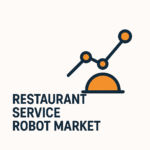The Robot Process Automation (RPA) market has rapidly evolved into a pivotal force within the broader digital transformation landscape, revolutionizing how organizations streamline operations, reduce costs, and enhance productivity. RPA refers to the use of software robots or “bots” that mimic human actions to execute routine, rule-based tasks across various applications. As industries face increasing pressure to become more agile and efficient, RPA has emerged as a go-to solution for automating high-volume processes such as data entry, invoice processing, customer onboarding, compliance reporting, and IT support. Enterprises across sectors including banking, insurance, healthcare, retail, telecom, and logistics are leveraging RPA to drive operational excellence while freeing human resources for higher-value tasks. One of the key drivers behind the surge in RPA adoption is its ability to integrate seamlessly with existing legacy systems without necessitating a complete infrastructure overhaul. Moreover, advancements in artificial intelligence and machine learning are amplifying RPA capabilities, giving rise to intelligent automation where bots not only follow rules but also make decisions based on contextual data. This convergence of AI and RPA is transforming business workflows from static scripts into dynamic, learning systems that evolve over time. As companies continue their journey toward full digitalization, RPA is no longer viewed as a mere cost-saving tool but rather as a strategic enabler for scalability, accuracy, and compliance.
Regionally, the RPA market is witnessing diverse growth patterns influenced by economic priorities, technological maturity, and workforce dynamics. North America remains at the forefront of RPA adoption, driven by the presence of global technology firms, early digitalization trends, and strong demand for productivity-enhancing tools among large enterprises. In Europe, regulatory requirements and the push for greater transparency and operational efficiency are encouraging adoption in sectors such as finance, manufacturing, and government services. Meanwhile, the Asia-Pacific region is emerging as a high-growth area, fueled by rapid industrialization, increasing tech investments, and a large volume of repetitive tasks across business process outsourcing (BPO) hubs. Countries like India, China, and the Philippines are particularly active in integrating RPA to maintain their competitive edge in global service delivery. As more organizations shift toward cloud-based deployments and adopt hybrid work models, RPA platforms are evolving to offer enhanced security, scalability, and collaboration features. Despite its immense potential, challenges such as resistance to change, process standardization, and governance issues still hinder broader implementation in some areas. However, with ongoing education, training programs, and the rise of low-code platforms, businesses of all sizes are becoming more equipped to embrace RPA. The future of the market lies in intelligent, self-healing automation systems that can operate across end-to-end processes, enabling enterprises to achieve true digital agility in a constantly evolving economic environment.
Let me know if you’d like to explore [key use cases](f), [leading vendors](f), or [market forecasts](f).


